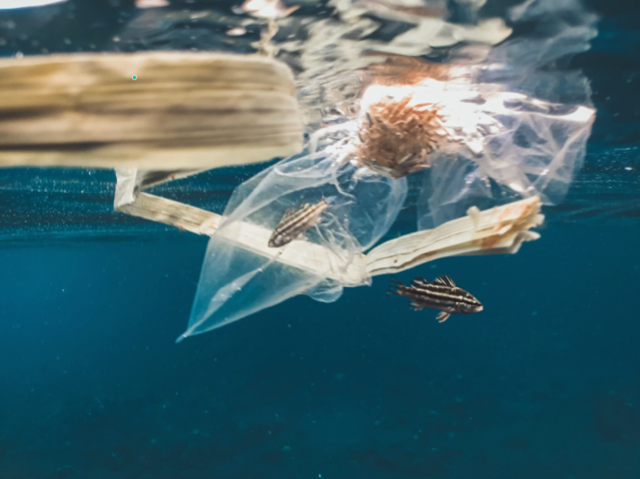It is no surprise that a large amount of our plastic waste ends up in the ocean. Most of us are now all too familiar with most of the early research, which has been focused on larger plastics found on beaches and floating on the surface of our oceans, less visible, however, are the more pervasive plastic bits that have spread into virtually every crevice on Earth, from the deepest sea trenches to the highest alpine mountains. These are called microplastics, a term that refers to plastic particles that measure less than five millimetres. Some microplastics are even so tiny they are part of the dust that blows around the planet, high in the atmosphere.
Shockingly, our clothes are unfortunately one of the largest sources of primary microplastics and are released when we wash synthetic clothing, such as items made from acrylic, nylon and polyester. These fibres detach from our clothes when we clean them in our washing machines and go into the wastewater and as the fibres are so small, many pass-through filtration processes and make their way into our oceans. As cited by The Fashion Revolution, around 50% of our clothing is made from plastic and up to 700,000 fibres can come off our synthetic clothes in a typical wash. As a result, if the fashion industry continues as it is, by 2050, 22 million tonnes of microfibres will enter our oceans.
What does this mean for our oceans? Much of the plastic that is in the ocean, in terms of the number of pieces, is not in the form of whole products like cups or straws that we so readily think of, but instead broken-down shreds of plastic, and it is having a devastating effect on our marine life.
Microplastics are accumulating in the food chain and being ingested by all sorts of marine wildlife. Studies have found that microplastics disrupt reproductive systems, stunt growth, diminish appetite, cause tissue inflammation and liver damage, and alter feeding behaviour. A recent study found around 73% of fish caught had microplastics in their stomachs. Even the animals that live in the Mariana Trench, the deepest part of the ocean, are eating microfibres. However, let’s not also forget about us! A new study in the journal Environmental Science and Technology says it’s possible that humans may be consuming anywhere from 39,000 to 52,000 microplastic particles a year. With added estimates of how much microplastic might be inhaled, that number is more than 74,000.
Worldwide, there are now vigorous efforts to reduce the use of key products that end up in the oceans, items such as plastic cups, shopping bags and bans on straws. However, as we seek solutions to the overall issue of plastic pollution, we must now educate ourselves and recognize the role of microplastics, the deadly invisible plastic that our clothing is unfortunately a major part.
So what can we do? It might seem like there’s an easy solution to the problem of our clothes shedding plastic: Just buy natural fibres one may say, or indeed fewer clothes overall. However, it shouldn’t be so limiting to be environmentally conscious or indeed associated with a higher cost, after all, often synthetic clothing is affordable clothing. For a solution to be doable, it needs to be accessible for all, therefore it has to be more systemic. There are two key things that could make a huge impact. Firstly, our washing machines need to be designed to reduce emissions of fibres to the environment and secondly, textile manufacturers need to design fabrics that shed less. The fashion industry needs to take responsibility for minimising future microfibre releases. Brands can have the most impact if they take microfibre release into consideration at the design and manufacturing stages. Designers should consider several criteria in order to minimise the environmental impact of a synthetic garment. Consumers can then be more mindful. Ultimately, we need change at the ground level up and we must play our part to educate ourselves and champion the cause.



